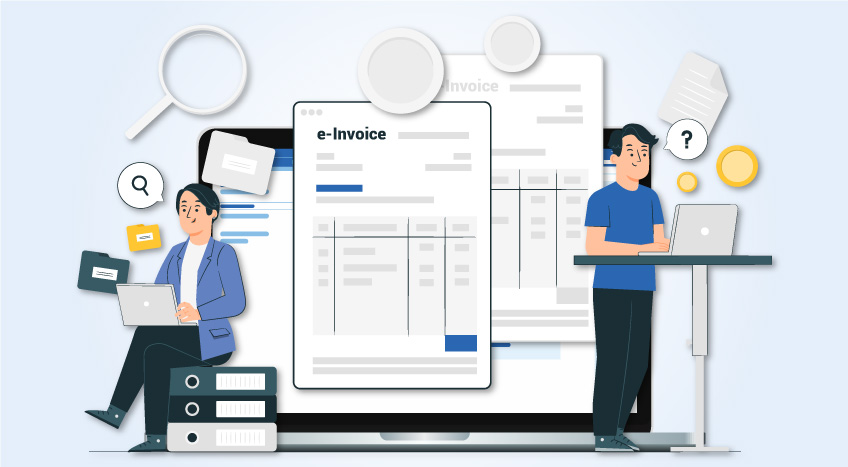- What are capital assets?
- Input VAT recovery on capital assets
- Calculation of input VAT adjustment for capital assets
- Example of input VAT adjustment for capital assets
- How TallyPrime can help?
The concept of input VAT recovery allows businesses to recover the input paid on purchase of normal tradeable goods and capital assets. The underline principle to recovery input VAT is that the goods or services should be used to make taxable supplies. While it is easier to determine the intended use for common goods or services, for capital goods, it becomes tricky. The reason is that capital goods are meant for a long-term purpose, and the intended usage may change over the years.
Before we get into the specific provisions, let’s understand how Oman VAT law defines capital goods.
What are capital assets?
In Oman VAT law, capital assets are defined as tangible and intangible assets that form part of the business assets of a taxable person, allocated for long-term use as a business instrument or means of investment. It includes the following:
- The acquisition or purchase of a land, building or both land and buildings.
- The construction of any building
| Expenses on which Input VAT Deduction is Blocked |
Input VAT recovery on capital assets
The Oman VAT allows you to recover the input VAT paid on capital goods in the first year, based on the intended nature of usage. Suppose there is a change in the intended nature of usage. In that case, the initially recovered input tax on capital assets is adjusted based on actual use during a specified time of 10 or 5 years. In the case of long-term capital assets, it is 10 years and 5 years for other capital.
Capital Assets adjustments start from the beginning of the tax year during which the Capital Assets were purchased, obtained, or constructed. The adjustment may either result in additional VAT payable or additional VAT recoverable.
Calculation of input VAT adjustment for capital assets
To determine the input VAT adjustment for capital assets, the VAT regulation details the method and formula to calculate the amount that needs to be adjusted. Below is the formula:
Adjusted Tax =Total input tax on Capital Assets X (Initial Recovery Percentage – Annual Recovery Percentage)/ Adjustment Period
To adjust, the below steps will be useful:
- Identify the total input VAT on capital goods
- Divide the total input tax with the useful life of the assets. In the case of long-term capital assets, it is 10 years and 5 years for other capital.
- Next, multiply the resultant with the change in usage, which is basically the difference between initial recovery in the first year and actual usage in that year
- The result from above will be either additional payment (positive result ) or further recovery of input VAT (negative result)
Example of input VAT adjustment for capital assets
Abdul Traders, a wholesaler of grocery products, purchased a commercial property and paid a VAT of 200,000 OMR in the month of May 2021. The intended use of the commercial property is to carry on the business of supplying grocery products.
Considering the above example, let us understand the input recovery on commercial property and input VAT adjustment due to changes in usage.
Abdul Traders can recover 100% of input VAT paid on commercial property in the first year, i.e. 200,000 OMR as input VAT in 2021 itself. It is allowed because the intended use of the commercial building by Abdul Traders is to make only taxable supplies.
Let’s say, in 2024, in the same commercial building where a grocery store was located, Abdul Traders started a transportation agency to provide local passenger services by taxi. It occupied 40% of the commercial building for delivering the local passenger service.
Local passenger service is an exempt supply in Oman VAT. From 2024 onwards, the commercial building is used to make taxable supplies (grocery Products) and exempt supplies (taxi service). This results in the change in the use of capital assets which was intended for 100% taxable supply but later used for making taxable and exempt supplies.
Considering the above change, Abdul traders need to make input VAT adjustments from 2024 to 2030, considering the useful life of the commercial building as 10 years.
Let us calculate the input VAT adjustment which Abdul Traders needs to do from 2024 to 2030 considering the below points:
- The total input VAT on the commercial building is 200,000 OMR
- The useful life of the commercial building is 10 years
- Change in usage is 40% (exempt supply) as compared to 100% taxable supply
- Input VAT recovered by Abdul Traders in the first year, i.e. 2021 is 200,000 OMR
- Change in usage is for 7 years, and adjustment is required from 2022 to 2027
The formula to derive the input VAT adjustment is given below:
Total input tax on capital item * (Initial Recovery Percentage – Annual Recovery Percentage)/ Adjustment period (useful life)
Adjustment for year 2024 = 200,000 * 40%/10 Years = 8000
From 2022 till 2030, Abdul Traders must make an input VAT adjustment of 8,000 every year. However, no adjustment is required from 2021 to 2023 because there was no change in the intended use of capital assets.
How TallyPrime can help?
TallyPrime, a business management software in Oman is now enhanced to support Oman VAT. TallyPrime makes the process of VAT compliance seamless and efficient. With TallyPrime, all you need to do is 3-4 simple steps to get started. Using TallyPrime, you can record and generate tax invoice, print bilingual tax invoice, manage all type of supplies, generate Vat accurate return and much more.
Watch Video on VAT Treatment on Capital Goods Presented by CA Manu Palerichal
Read more:









